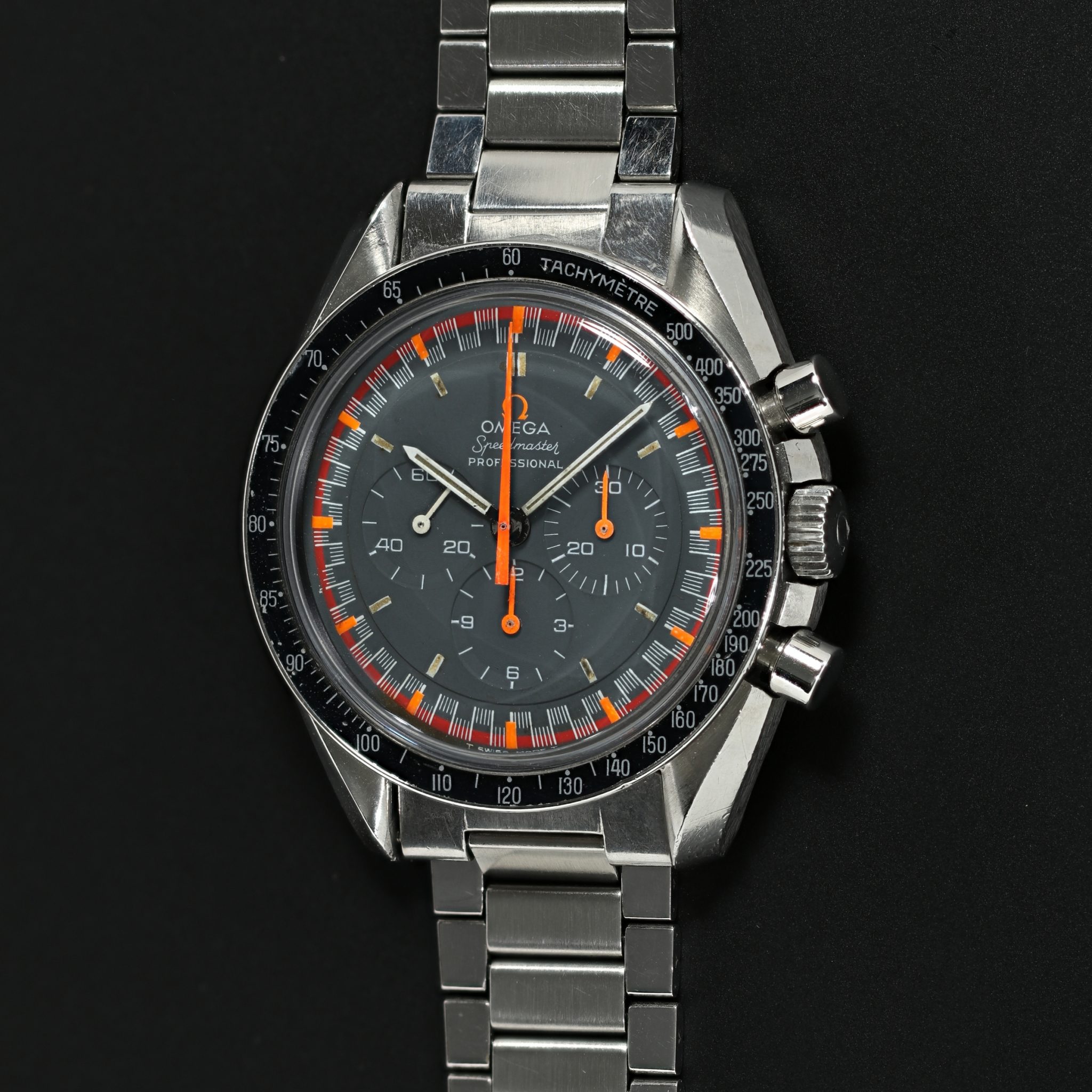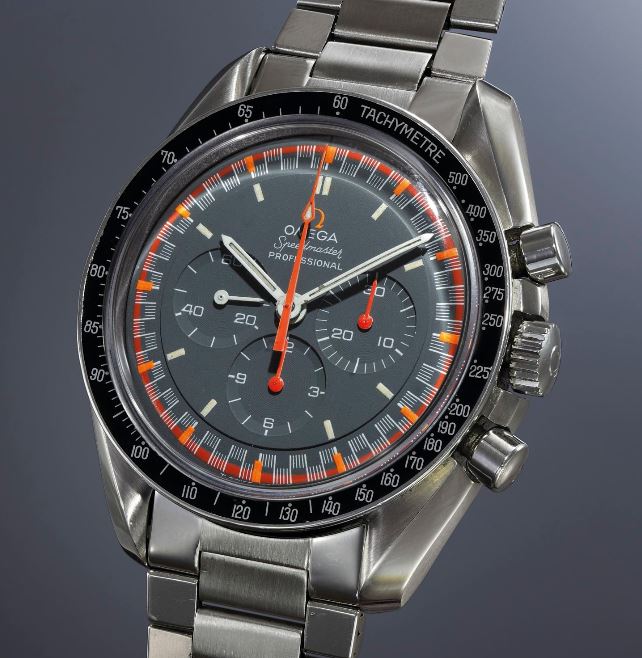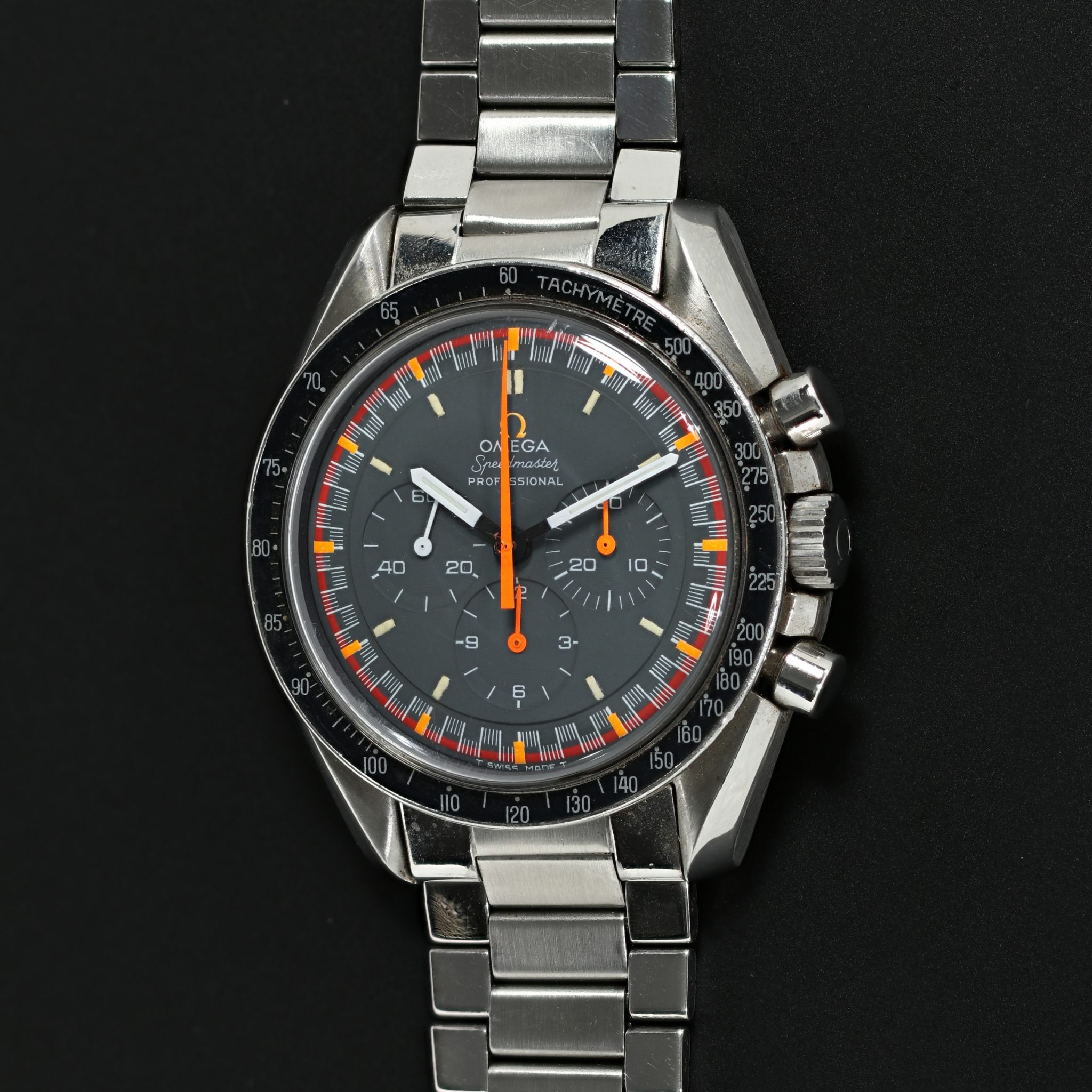Grey Racing Speedmaster
Posted on |
This is a special execution of the 145.022-69
Primary characteristic is the special grey dial, with a step and printed logo, and T SWISSMADE T on the bottom. This dial differs from other racing dials. The MKII dial is flat, rather than stepped, and of course has the marking “Mark II”. There are some MkII dials fitted to asymmetric cases and some have even had the Mark II line removed, though none I have seen are successful. The 2004 “Japan Special” has a similar dial, but no step and no T marks.
The second characteristic is the handset, which is usually seen as below. Note the black centres to the hour/minute hands, and the orange chronograph hands.

Normally they appear as above.
I have thought up until now that this was the only correct execution until somebody asked my opinion on a watch with a different configuration. I won’t show his watch here but my attention was drawn to this lot sold at Philips in 2016, details here

Note that the all white hour/minute hands are the standard speedmaster hands, and the central chronograph hand is a square ended hand in red-orange. According to sources close to the museum this configuration is original, and was released in a very small serial range and is considered correct.
I wonder what the collecting community will think in terms of value difference between the square ended hand version and the more commonly known needle hand, with black centre white hands. It is rarer, and is it more valuable as a result? The red orange square end chrono hand reminds me of the Alaska Prototypes….That ought to get people going!
Revolution watches has done a very good article on Racing Dials here. They also show several configurations, (including the needle and the square end) as well as discussing in depth the specifications and values. Its a good read.
Finally I will share a Gray racing that I bought from Switzerland after having a full Omega service. Note that this watch carries extremely fresh looking hands, in a similar configuration to the MkII. It also has an extraordinarily high quality dial, the best dial I have ever seen. It made me wonder if omega during the service found an original NOS dial, and fitted it with new MkII hands.
Ever since I bought it I have been wondering whether or not to change them however I consider that as a Omega changed these parts, I don’t have to hurry to try and make it what I think of as correct. This recent experience of being shown what I thought initially was incorrect fitment of hands, slows me down before rushing to do some major work that in fact may not be taking the watch closer to its original specification.
The watch below has the Omega factory history, and looks completely fresh. I will leave it.


You must be logged in to post a comment.